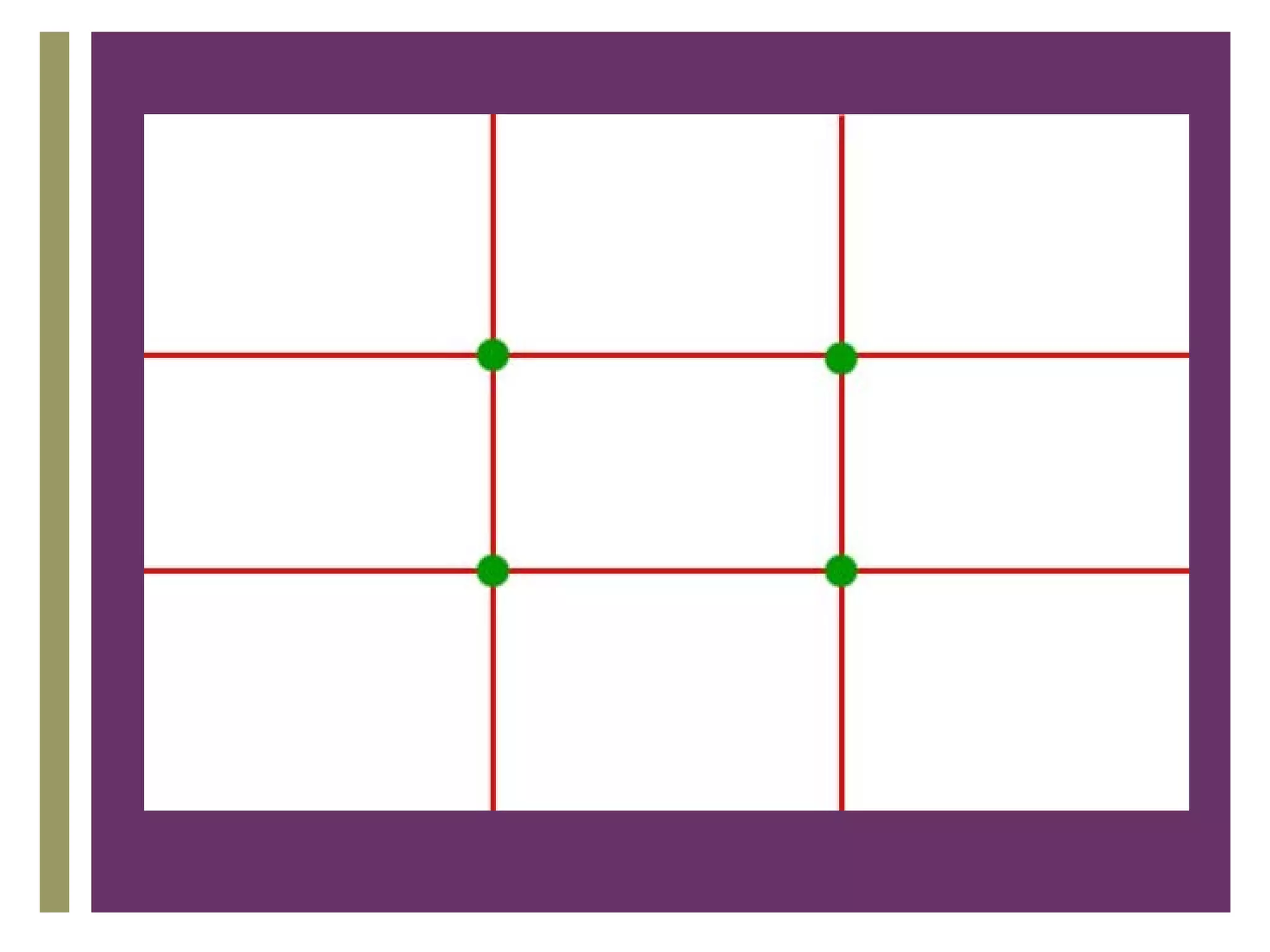The document provides 10 guidelines for taking better photographs: 1) Fill the frame with your subject, 2) Look for uncluttered backgrounds, 3) Find good natural lighting, 4) Keep designs simple, 5) Follow the rule of thirds for composition, 6) Look for frames within the environment, 7) Achieve visual balance, 8) Use lines and shapes to direct the eye, 9) Avoid mergers where elements overlap distractingly, and 10) Look for repeating patterns and colors that enhance visual interest. Following these tips can help create more compelling photographic compositions.




















